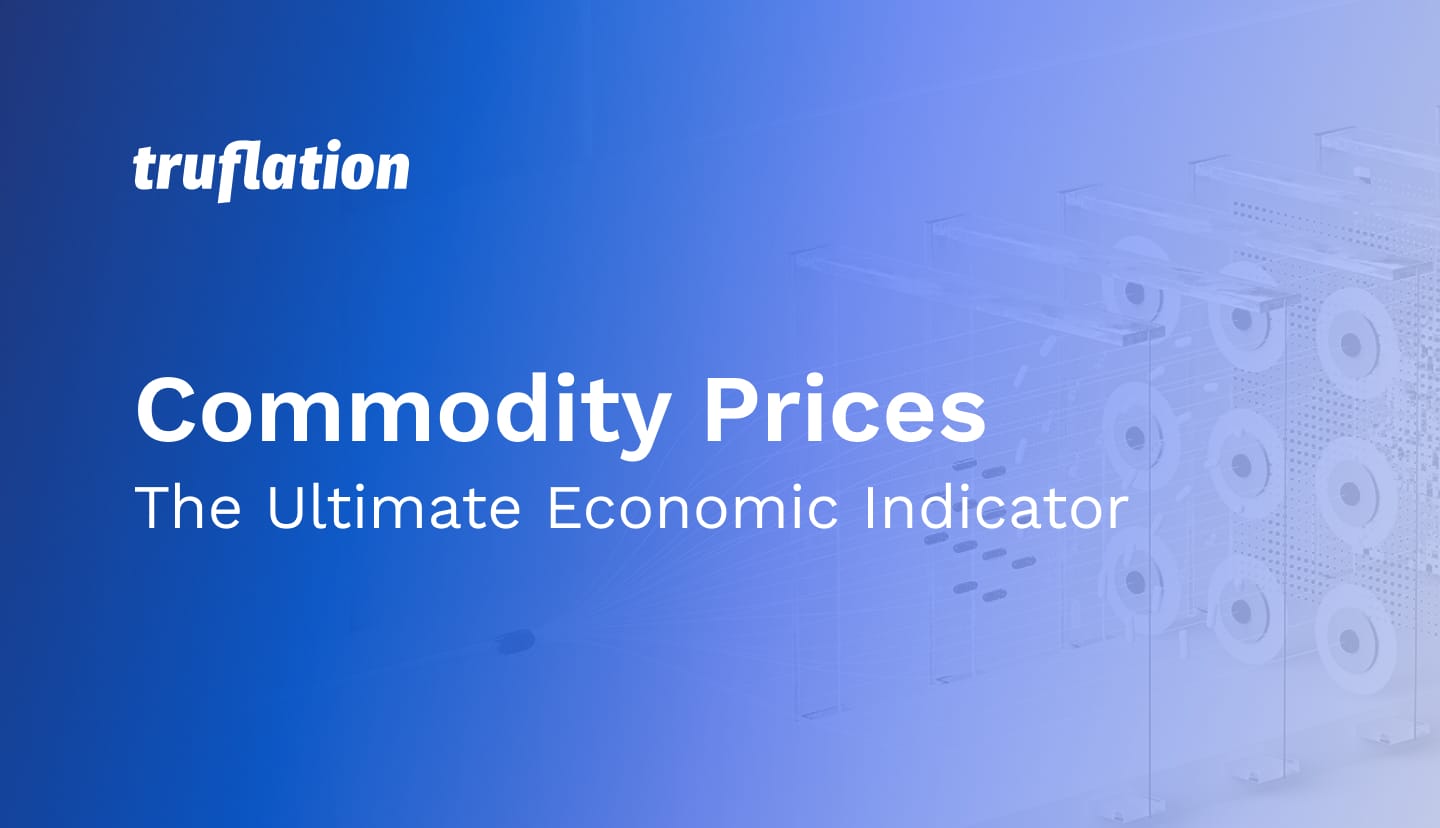Commodities Prices – The Ultimate Economic Indicator

Understanding the drivers behind commodities is essential from two perspectives. Firstly, price fluctuations have significant economic consequences. Secondly, they have an impact on inflation, making it mandatory to keep track of commodity prices in the current macroeconomic landscape. Moreover, commodities hold predictive power, which is vital for commodities-related investments.
A Relevant Indicator of Economic Growth
Since commodities are essential for a country's production, exports, and imports, it is logical that their prices serve as a useful indicator for determining the economic situation of that country. Price changes can have significant effects, whether positive or negative.
On one hand, volatility in commodity prices affects trades, which are a crucial part of the economy. The relationship between the prices paid for commodity imports and those received for exports is fundamental. A significant imbalance can result in serious consequences for the domestic economy. These consequences may include volatility in government finances and the adoption of stop-start monetary policies, alternating between combating high unemployment and managing elevated inflation.
The Great Inflation in the 1970s is an eloquent example in this sense and a lesson to remember. Back then, there was a boom in commodity prices, especially grains and oilseeds. The response was a series of start-stop policies until 1980. Each of them led to a contraction of economic activity. Yet the inflation rate wasn’t affected that much – the duration of these episodes was too short to have clear results.
And, as U.S. economist Megan Greene says, "If you engage in stop-start monetary policy, you may end up having to tighten even more and generating an even worse recession on the other side."
Furthermore, in the case of a country heavily reliant on commodity exports, price swings can impact long-term economic growth.
So, how can we utilize commodity prices as an indicator of what lies ahead in terms of economic growth?
- Commodity returns can provide an accurate prediction of the GDP growth for the next quarter.
- High commodity prices and basis values indicate a strong economy in the following period.
In addition, analyzing a country's commodities inventory can paint a picture of what its future development will look like. If crude oil is available, that is an excellent avenue for foreign exchange. Gold can increase a country's capital reserve, and metals and agricultural goods can bring significant foreign inflows and lead to a growth in GDP.
However, it is not just about the presence of these commodities; the way their prices evolve is crucial and needs to be analyzed.
Who needs to follow future price movements in the commodity sector? Producers are the most interested, merchandisers, and basically, anyone involved in commodity markets. Any marketing or risk management strategy in this sector relies on this information.
And then there is the relation to inflation.
Commodity Prices and Inflation
Commodity prices can be a useful indicator of inflation because they quickly respond to changes in demand. Like equity securities, the forces of supply and demand apply to them. Low supply means high demand and high prices, while high supply means low demand and low prices.
However, prices quickly respond to several risk factors, such as pandemics, conflicts, and natural disasters, as has become painfully obvious in recent years.
The war in Ukraine is a relevant example of how conflicts affect commodities. Since the conflict is between two important producers and exporters, the result is a severe disruption in supply chains, leading to soaring prices for the commodities they provide.
Indeed, these high prices can be an opportunity for alternative exporters to gain additional revenue. However, the most serious consequence is the rise in inflation at a global level. The fact that the pandemic had already caused inflation problems was one more factor that aggravated the situation.
So how do commodity prices correlate to inflation?
For governments, price volatility means problems with fiscal and monetary policies. It becomes complicated to maintain price stability, also known as controlling inflation. It also causes issues with maintaining external stability (adequate foreign reserves).
For regular people/consumers, it means they need to manage on lower incomes, and their purchasing power decreases significantly. This happens because local authorities usually cannot control this price volatility, so it is up to consumers to absorb the shock.
That's why keeping track of price movements in the commodities sector is imperative.
Portfolio Diversification and Inflation Hedge
On the other hand, commodities also provide a solution for keeping safe from the damage caused by inflation. Trading commodities futures is a popular way to diversify one's portfolio and hedge against inflation.
In this case, following price trends for each commodity is crucial for speculating on future price movements.
Like following Truflation’s rate trends for Gold Futures in order to manage exposure to gold price fluctuations.
These traders need to keep track of market activity and patterns but also need a dependable source of price rate trends.
Supply and demand influence prices in one direction or another, so they enter long/short positions accordingly.
Truflation Data Feeds – for Unbiased Market Assessment
The bottom line is that commodities play a crucial part in the global economy, and their price movements can have severe consequences on many levels. That underlines the importance of having an efficient method of tracking prices and discovering trends.
We have introduced Truflation data feeds for the most important commodities. It is an excellent instrument for futures traders and investors looking to gauge the global economy's health.
It is a comprehensive source of up-to-date financial data that we built on the same system as our industry-leading inflation index, which most of you are already using regularly. And we keep rolling out new data feeds to expand this data library. The marketplace of true data, the new Truflation economic data feature, is available here: https://truflation.com/data/

